Discovery of drugs to treat cocaine dependence: behavioral and neurochemical effects of atypical dopamine transport inhibitors
- PMID: 20230764
- PMCID: PMC6768413
- DOI: 10.1016/S1054-3589(08)57007-4
Discovery of drugs to treat cocaine dependence: behavioral and neurochemical effects of atypical dopamine transport inhibitors
Abstract
Stimulant drugs acting at the dopamine transporter (DAT), like cocaine, are widely abused, yet effective medical treatments for this abuse have not been found. Analogs of benztropine (BZT) that, like cocaine, act at the DAT have effects that differ from cocaine and in some situations block the behavioral, neurochemical, and reinforcing actions of cocaine. Neurochemical studies of dopamine levels in brain and behavioral studies have demonstrated that BZT analogs have a relatively slow onset and reduced maximal effects compared to cocaine. Pharmacokinetic studies, however, indicated that the BZT analogs rapidly access the brain at concentrations above their in vitro binding affinities, while binding in vivo demonstrates apparent association rates for BZT analogs lower than that for cocaine. Additionally, the off-target effects of these compounds do not fully explain their differences from cocaine. Initial structure-activity studies indicated that BZT analogs bind to DAT differently from cocaine and these differences have been supported by site-directed mutagenesis studies of the DAT. In addition, BZT analog-mediated inhibition of uptake was more resistant to mutations producing inward conformational DAT changes than cocaine analogs. The BZT analogs have provided new insights into the relation between the molecular and behavioral actions of cocaine and the diversity of effects produced by dopamine transport inhibitors. Novel interactions of BZT analogs with the DAT suggest that these drugs may have a pharmacology that would be useful in their development as treatments for cocaine abuse.
2009 Elsevier Inc. All rights reserved.
Figures
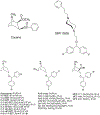





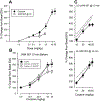
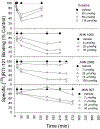
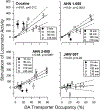

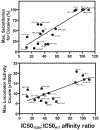
References
-
- Agoston GE, Vaughan R, Lever JR, Izenwasser S, Terry PD, and Newman AH (1997a). A novel photoaffinity label for the dopamine transporter based on substituted 3 alpha-[bis(4’-fluorophenyl)methoxy]tropane. Bioorganic Medicnal Chemistry Letters 7(23), 3027–3032.
-
- Agoston GE, Wu JH, Izenwasser S, George C, Katz J, Kline RH, and Newman AH (1997b). Novel N-substituted 3 alpha-[bis(4’-fluorophenyl)methoxy]tropane analogues: selective ligands for the dopamine transporter. J Med Chem 40(26), 4329–39. - PubMed
-
- Ameri A (1999). The effects of cannabinoids on the brain. Prog Neurobiol 58(4), 315–48. - PubMed
-
- Arnold JC (2005). The role of endocannabinoid transmission in cocaine addiction. Pharmacol Biochem Behav 81(2), 396–406. - PubMed
-
- Baker LE, Riddle EE, Saunders RB, and Appel JB (1993). The role of monoamine uptake in the discriminative stimulus effects of cocaine and related compounds. Behav Pharmacol 4(1), 69–79. - PubMed
Publication types
MeSH terms
Substances
Grants and funding
LinkOut - more resources
Full Text Sources
Other Literature Sources
Medical

